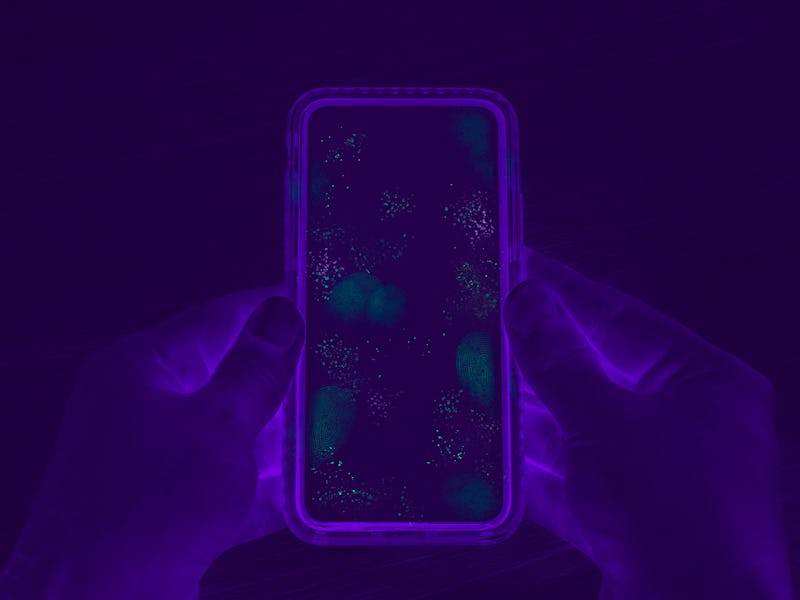Your smartphone could detect the next pandemic
You have a medical lab in your pocket.

Smartphones have played a starring role in the Covid-19 pandemic. From receiving rapid test results to checking public-health guidelines, to tracking daily infection rates in your area — smart phones are fast becoming indispensable medical devices.
In the future, these devices may be able to do even more to protect our health. In a new study published Wednesday, a team of researchers demonstrate how to use a smartphone camera to accurately identify various life-threatening virus strains in less than an hour using a vision-based deep learning algorithm.
This cheap and accessible diagnostic tool could be used now to help communities where viral spread is high but healthcare funding is low track the course of a pandemic. In the future, it could also help people across the world detect future pandemics as they start, and enable at-home testing.
"Such technology can be rapidly augmented for the detection of new target pathogens and help flatten the curve of the number of infections by enabling rapid, sensitive, low-cost virus detection at the point of care," Hadi Shafiee, an author on the study and principal investigator at Harvard Medical School, tells Inverse.
Here's the background — Across the world, mobile smart phones are fast becoming ubiquitous. In 2019 mobile subscribers numbered approximately 5.18 billion people. By 2025, it is estimated more than 5.7 billion people will have a mobile phone subscription. In many countries around the world, and some parts of the United States, having a smartphone is more common than owning a computer.
This ubiquity means smartphones are excellent candidates to moonlight as life-saving medical tools. And it's a role they're no stranger to playing, either.
What's new — Medical researchers have developed attachments and software to transform cellphones into point-of-care medical devices — for the detection of cancers and infectious disease, as well as mental-health conditions. But what sets this new approach apart, say this study's authors, is that their system requires no additional equipment to accurately identify viruses with 99 percent sensitivity.
"Unlike all other previous work in mobile health technologies for protein/virus detection, our system is simple in sample processing, sensitive, and adaptable to different smartphone models," write the authors. "[And it] does not need any hardware optical smartphone attachment."
This sleek design means such a device is simpler, more portable, and more cost-effective than traditional lab equipment. It also requires no roll out other than a phone software upgrade.
"Such smartphone-based technologies have the potential to improve rapid, sensitive target pathogen detection without the need for complex systems usually required in molecular-based diagnostics including nucleic acid extraction and amplification, thermal cycling, and in some cases fluorescent read out," Shafiee says.
The system is set up to detect three different kinds of viruses: Zika, Hepatitis B, and Hepatitis C.
In the future, your at-home medical team may be made of bots.
How it works — There are three main elements that make the system work:
- A deep-learning network
- A smartphone camera
- A catalytic microchip
In a nutshell, here's how it works: Researchers isolated 134 viral samples and placed them on microchips equipped with catalytic (meaning chemically reactionary) platinum nanoprobes that, when exposed to hydrogen peroxide, create a unique pattern of bubbles per virus. Then, a deep-learning algorithm trained to recognize these unique bubble patterns, snaps a shot of the bubbling microchip, and analyzes it to identify the virus.
All told, the diagnostic analysis takes just 50 minutes, the researchers report.
What they discovered — The researchers found their system has a sensitivity of close to 99 percent — all told, it only had four miss-classified results.
"[We] demonstrated a unique integration of advancements in nanotechnologies, microfluidics, and consumer electronics to solve an unmet clinical barrier in the management of infectious diseases," write the authors.
Why it matters — In the future, the authors believe this approach can be modified to better detect a wide variety of other pathogens. It also has big potential as a clinical detection device in communities with limited access to advanced healthcare equipment, like Sub-Saharan Africa, or rural India.
The Inverse Analysis — The next pandemic is not a topic anyone wants to discuss right now, but it's possible future smartphones may take advantage of an algorithm design like this one to transform into at-home virus detection kits.
Such an innovation could vastly improve people's health and safety during future virus outbreaks.
Abstract: Emerging and reemerging infections present an ever-increasing challenge to global health. Here, we report a nanoparticle-enabled smartphone (NES) system for rapid and sensitive virus detection. The virus is captured on a microchip and labeled with specifically designed platinum nanoprobes to induce gas bubble formation in the presence of hydrogen peroxide. The formed bubbles are controlled to make distinct visual patterns, allowing simple and sensitive virus detection using a convolutional neural network (CNN)–enabled smartphone system and without using any optical hardware smartphone attachment. We evaluated the developed CNN-NES for testing viruses such as hepatitis B virus (HBV), HCV, and Zika virus (ZIKV). The CNN-NES was tested with 134 ZIKV- and HBV-spiked and ZIKV- and HCV-infected patient plasma/serum samples. The sensitivity of the system in qualitatively detecting viral-infected samples with a clinically relevant virus concentration threshold of 250 copies/ml was 98.97% with a confidence interval of 94.39 to 99.97%.